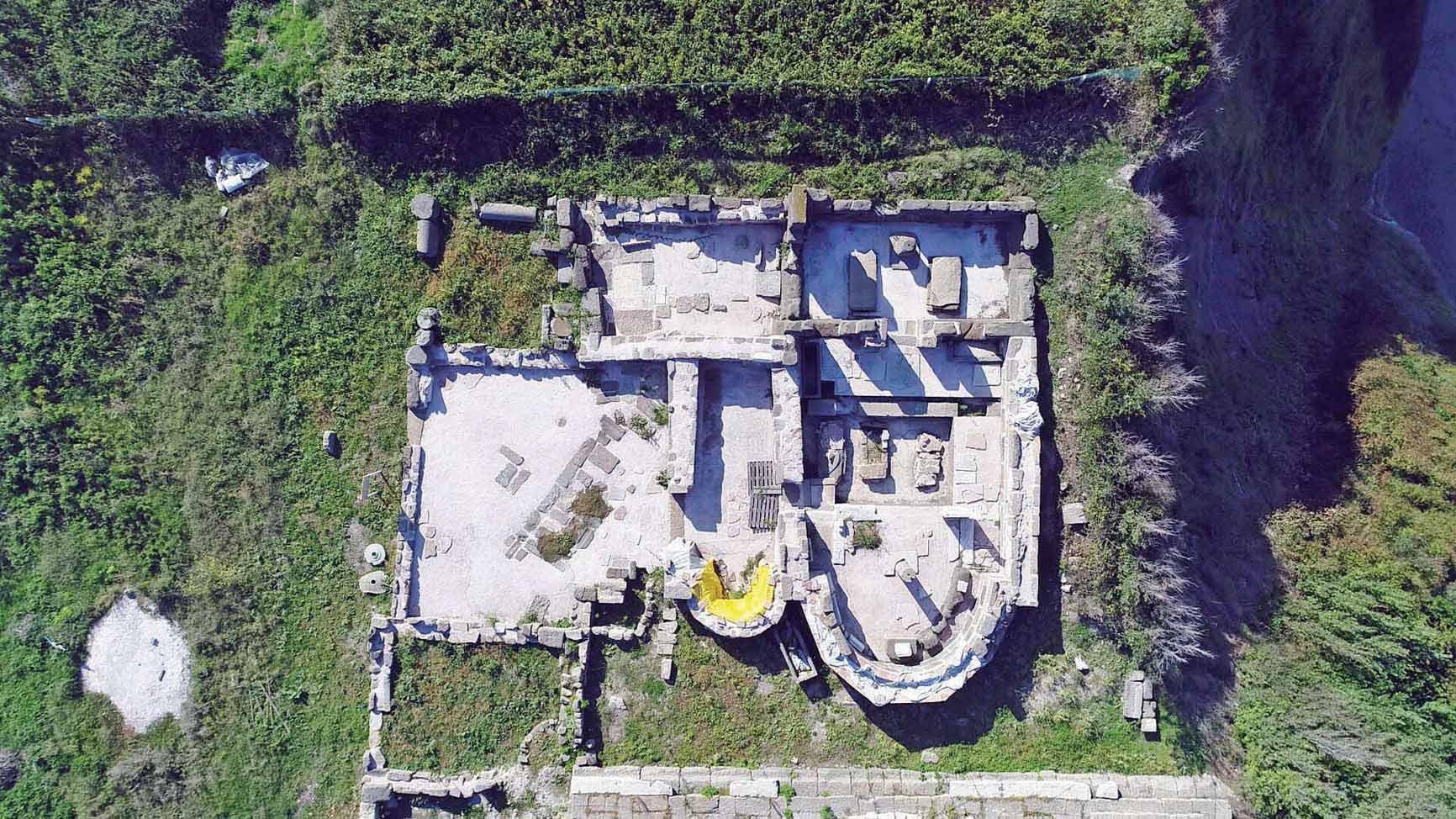
The ancient city of Tieion, in the Çaycuma district of the northern Turkish province of Zonguldak, believed to be the first settlement area in the entire Black Sea region dating back to the 6th century B.C., has been uncovered during ongoing excavations at the shore town of Filyos.
Şahin Yıldırım, the head of the excavations from Bartın University’s Archeology Department, told state-run Anadolu Agency that the excavated ancient port, pier, temples, theater and settlement areas provide important information about the region’s social and economic structure throughout history.
“The first excavations started 11 years ago in the Acropolis, which is named the ‘Upper City.’ We especially concentrated in this area because this is the place where the first ancient city in the Black Sea region was built.
Although the ancient studies in the region date back as early as the 7th century B.C., this is a settlement area built in the 6th century B.C.,” said Yıldırım.
He noted that archeology in the Black Sea was underdeveloped compared to the Aegean and Mediterranean regions of Turkey, as many places are under modern settlements today.
“The studies in the Acropolis are of scientific importance to us. This excavation showed us that it is the only ancient site not hidden under a modern settlement in the whole Black Sea region. Today, many ancient cities are under modern settlements in the area. That is why in the Black Sea region not much ancient archeological heritage has been [excavated so far]. So Filyos is unique in that respect,” Yıldırım said.
Before this excavation, the only ancient theater in the northern region was in Amasra but a second one has now been found in Filyos.
“We found a Roman temple and an ancient theater during the excavations. There is also another ancient theater in the same region, in Amasra, but that one has a graveyard on top of it. The ancient theater in Filyos had a capacity of 5,000 people. Currently we have difficulties with the inefficiency of rail access in the area. But after we overcome these difficulties we will continue here with the studies and the restoration,” he said.
During the Filyos excavations the team found the most well-preserved ancient port in the Black Sea and said its pier remains standing up to the present day.
“For two years we have been carrying out excavations under the water in the area. We first started with test diving and identified around eight submerges under water. We saw that these submerges were dating from the Roman period until the Turkish Islamic period. So this ancient port was being used for a long time,” the excavation head Yıldırım said.
We know that the Black Sea was a very important sea line and route and was became a very important trade colony in the Genoese, Ottoman, Roman and Hellenistic periods. We hope to bring these traces to the fore with the studies we will conduct in the excavated ships and ports,” he added.
“Some of the ships are already in quite a good condition. We have projects where we want to introduce these ships to today’s people by making their models and presenting them in the ancient port,” he said, adding that they would continue next year with underwater archeological excavation studies.
In international symposiums the land and underwater excavations at Filyos receive a lot of attention as they offer an insight into the history of the entire Black Sea region and not only one specific area.
Yıldırım also said the excavation is important because it shows the traces of the first Turkish-origin people who settled in this area of the Black Sea region.
“We’re planning a landscaping project in the Akropol area. We will cover the Byzantium fortress completely with a roof that we unearthed in the Akropol. The Roman fortress in the area will be raised in accordance with the found data in the excavations. We will also build a point like a glass terrace around the fortress for people to walk around and visit. Everything will be completed in two or three years,” he said.
Local officials are currently planning an exhibition project to show the discoveries in the Filyos excavations, in order to inform people more about the ancient history of this part of the Black Sea region.